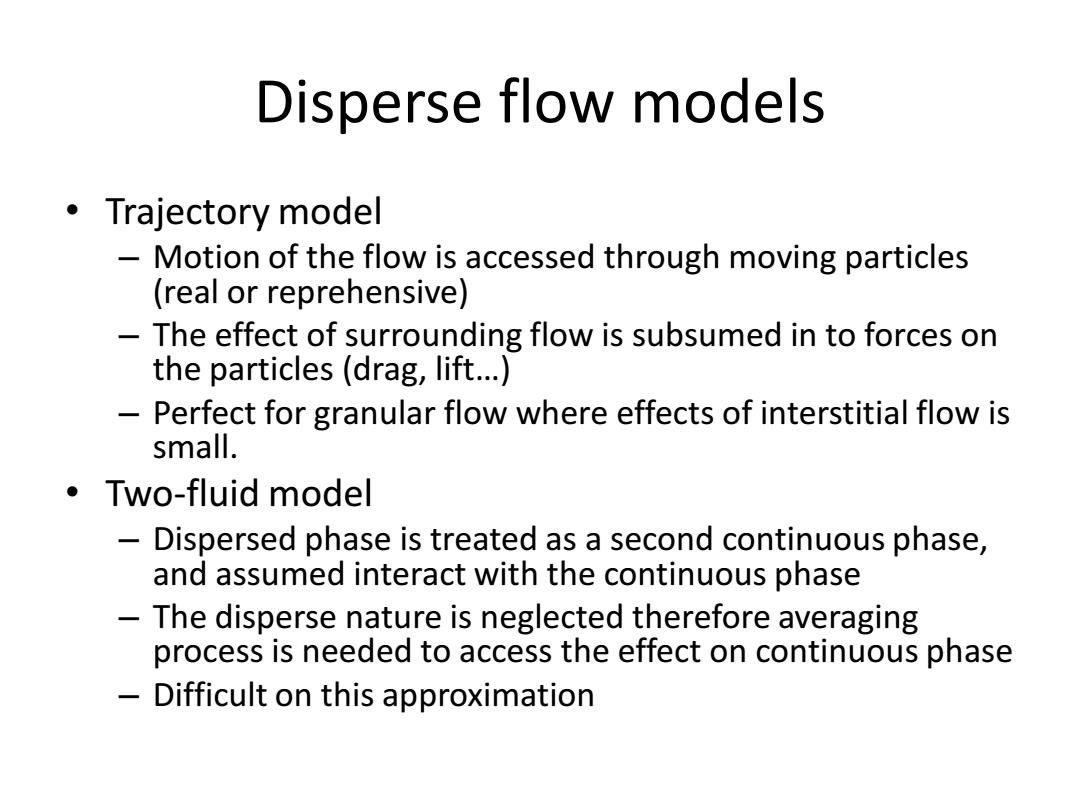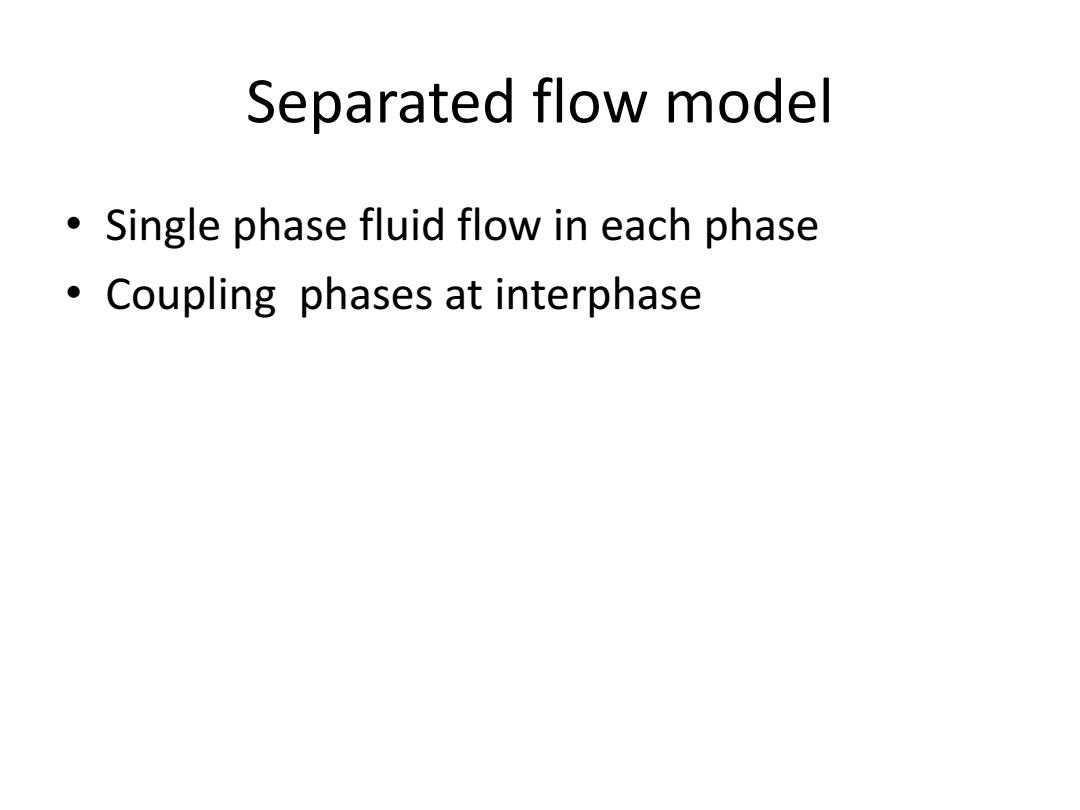
Disperse flow models 。Trajectory model Motion of the flow is accessed through moving particles (real or reprehensive) The effect of surrounding flow is subsumed in to forces on the particles (drag,lift...) Perfect for granular flow where effects of interstitial flow is small. 。Two-fluid model -Dispersed phase is treated as a second continuous phase, and assumed interact with the continuous phase The disperse nature is neglected therefore averaging process is needed to access the effect on continuous phase -Difficult on this approximation
Disperse flow models • Trajectory model – Motion of the flow is accessed through moving particles (real or reprehensive) – The effect of surrounding flow is subsumed in to forces on the particles (drag, lift…) – Perfect for granular flow where effects of interstitial flow is small. • Two-fluid model – Dispersed phase is treated as a second continuous phase, and assumed interact with the continuous phase – The disperse nature is neglected therefore averaging process is needed to access the effect on continuous phase – Difficult on this approximation

Separated flow model Single phase fluid flow in each phase Coupling phases at interphase
Separated flow model • Single phase fluid flow in each phase • Coupling phases at interphase